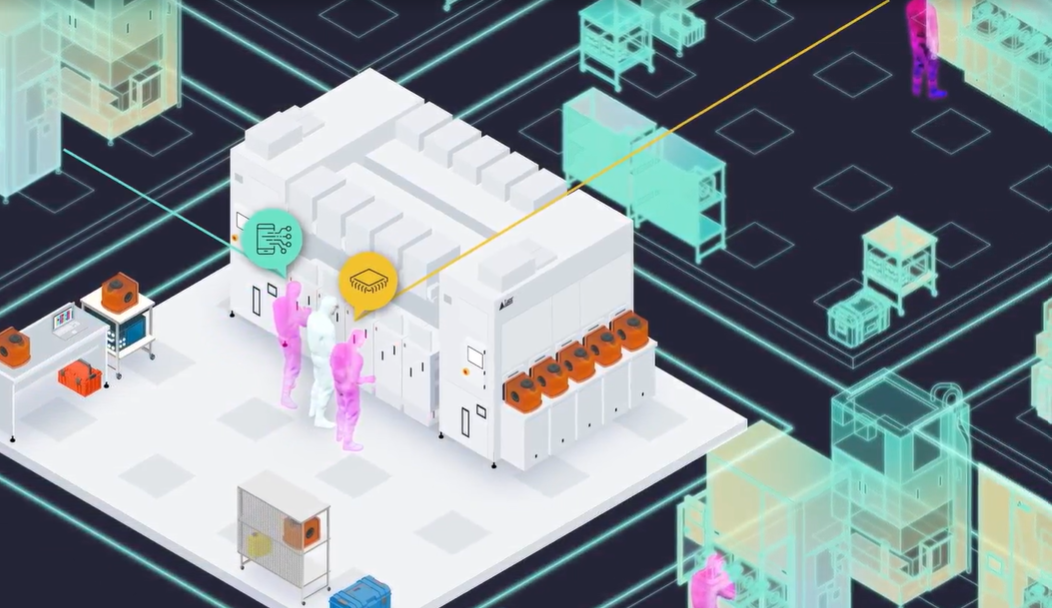
-
The Semiverse can usher in a new era of technological advancement in semiconductors
-
Lam needs our peers and competitors to help bring the Semiverse into reality
On Oct. 31, 2022 CEO Tim Archer spoke at the Semi International Trade Partners Conference about how the Semiverse can address challenges to our industry. This article is adapted from that speech.
The Semiverse is one possible solution to overcome four huge challenges facing the semiconductor industry:
-
Accessing the Workforce to Sustain Growth: The global workforce isn't ready in quantity or at the skill level in many of the places where big investments are being announced. If the semiconductor industry wants to attract STEM students from opportunities in other fields, workforce development must be a top priority.
-
Increasing Regionalization: Regionalization hinders efficient collaboration across physical distances, which is antithetical to how this industry works, whether it's in R&D or ramping up processes for high yield manufacturing.
-
Increasing Cost of Technology Scaling: Here we have a challenge. The acceleration of technological complexity must be supported at lower costs.
-
Reducing Environmental Impact: Lam, like other companies in our industry, has set goals for achieving net zero. We must develop with the environment fully in mind.
These are big challenges and there’s no single approach to solving them all. Collaboration and creativity enabled by the Semiverse is one way to help our industry address these problems.
Semiverse Explained
The Semiverse is a hybrid physical-virtual world that allows machines and humans to each do what they do best. Specifically, we see this as a way of augmenting human ingenuity with computers. In doing so we can see how this could help solve the workforce availability challenge, collaborate easily across borders, innovate at scale, and minimize our environmental impact. In short, we envision the Semiverse boosting speed to innovation.
In the Semiverse we will have virtual representations of the equipment that exists today within innovation centers that can be used as the basis for next-level collaboration. The Semiverse will turn individual physical laboratories into innovation powerhouses, where breakthrough ideas can be drawn from anywhere.
By interconnecting innovation centers on a large scale, semiconductor industry companies, startups, researchers, and students from all over the world can access equipment and run experiments without having to be physically present. When our engineers are equipped with productivity mechanisms, like a merged human-computer approach, they can scale and innovate faster with fewer physical resources and better results.
Reducing the need to own expensive physical tools allows startups and academia to contribute more disruptive ideas to the ecosystem. Creativity and problem-solving will thrive. We also expect tremendous savings in time and money by shortening development cycles and leveraging the investment already made in existing infrastructure.
Humans vs. AI
How can we use sophisticated artificial intelligence (AI) modeling in combination with our engineers’ know-how to create something that’s better than what either can do separately? We ran an experiment to find out.
We wanted to see whether computers could derive a recipe for a very complicated etch. We also asked our engineers to do the same thing without the aid of the AI. The results? Combining the efforts resulted in a faster resolution that used fewer resources. [Editor’s note: Details about this experiment will be shared in the future.]
This merging of the physical and virtual worlds is key.
500,000 Experiments
At Lam we run about half a million physical experiments every year, which means we consume silicon wafers, a variety of gases, water, nitrogen, and all kinds of resources. If we can run a large portion of those experiments virtually, we can significantly diminish our environmental impact.
In our virtual experiments we found ways to reduce the number of physical experiments by 20-50%. Imagine if we could translate that to the real world. That would mean reducing the number of experiments by 100,000 to 250,000 experiments each year—that's a tremendous promise in lowering our innovation costs and reducing environmental impact.
"As technology complexity increases, we need to use all of the tools available to us to solve the even harder problems - even faster," says David Fried, corporate vice president of Computational Products.
Building Blocks
We’re a long way from the Semiverse becoming a full reality across the semiconductor ecosystem. Bits and pieces are in play now and are starting to address the four main challenges to the semiconductor industry: workforce availability, increased regionalization, technology scaling, and environmental sustainability.
Lam can’t do it alone. Our peers and competitors are critical in helping make the Semiverse a reality.
This article contains forward-looking statements within the meaning of the Private Securities Litigation Reform Act of 1995. Forward-looking statements include any statements that are not statements of historical fact, including statements regarding the benefits of the Semiverse to Lam and to the industry, the ability of our engineers to scale and innovate, the speed and cost of innovation, the quality of results that may be achieved, potential time and money savings, impacts to development cycles, environmental impacts and sustainability, and achieving net zero. Forward-looking statements are subject to risks and uncertainties that could cause actual results to differ materially from the expectations expressed, including the risks and uncertainties described in our filings with the U.S. Securities and Exchange Commission, including specifically the Risk Factors described in our annual report on Form 10-K and quarterly reports on Form 10-Q. You should not place undue reliance on forward-looking statements. We undertake no obligation to update any forward-looking statements.